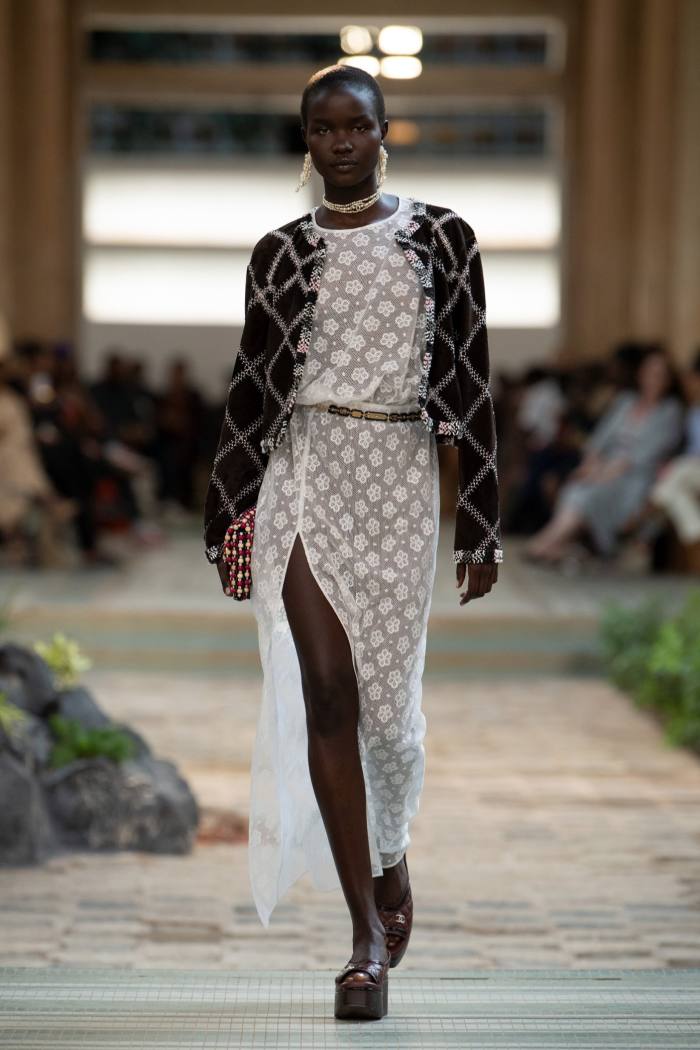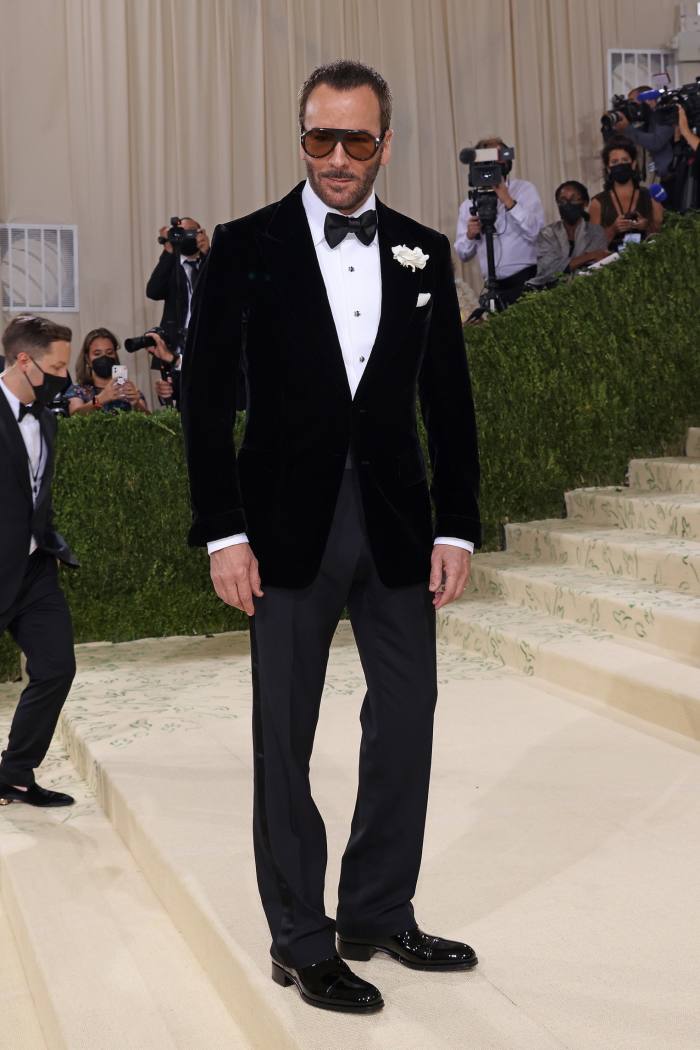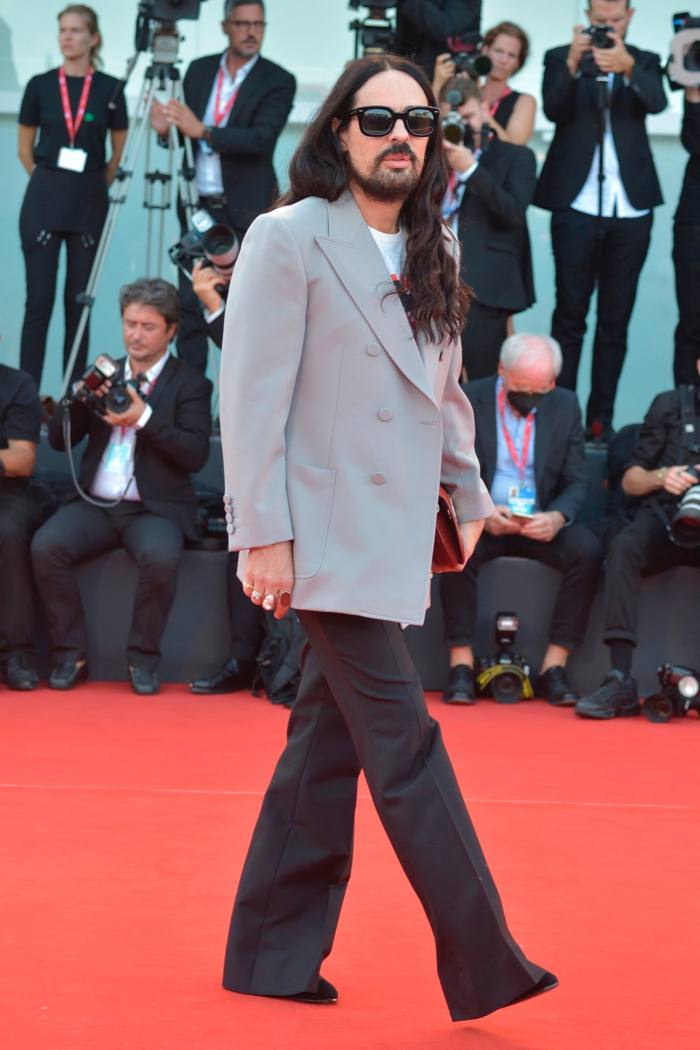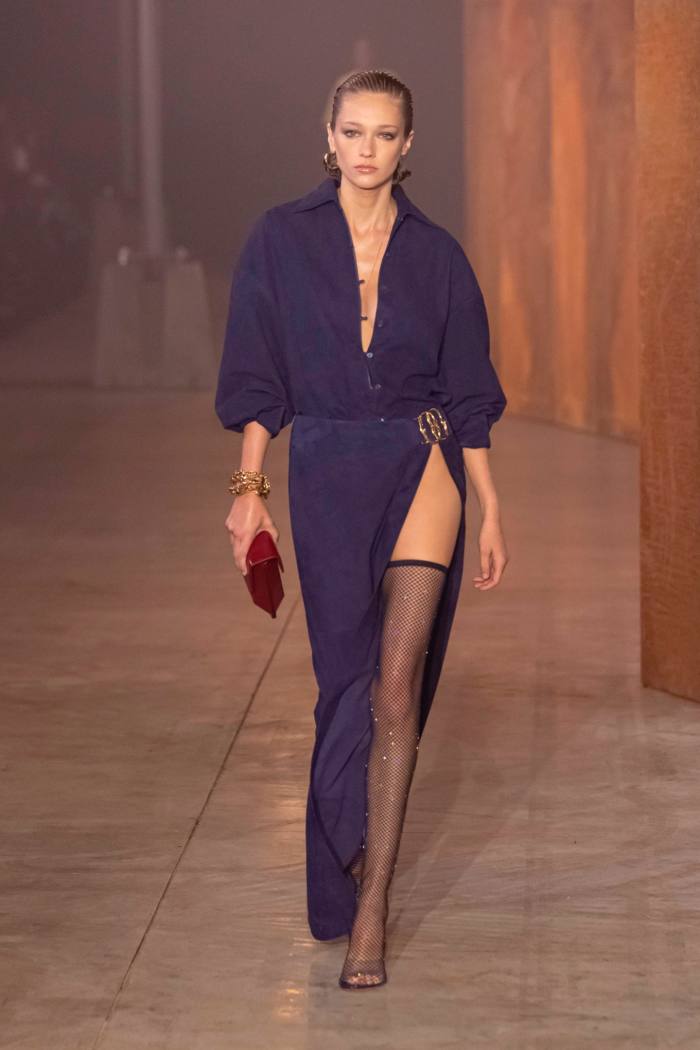
The pandemic had ruled the industry for two years. In 2022, new international challenges faced the fashion and luxury industries. This included the War in Ukraine and high levels of inflation across Europe, USA and UK. Also, the slowing Chinese economy. But 2022 was also a year of momentous changes within the industry, with a new wave of brand creative directors and CEOs; controversies, via Kanye West and Balenciaga; and big announcements, such as Tom Ford’s acquisition.
Goodbye to André Leon Talley


On January 18, celebrated fashion editor and journalist André Leon Talley passed away at the age of 73. Talley, an unmistakable figure often dressed in a sweeping cape and Manolo Blahnik boots, worked for titles including Interview magazine, Women’s Wear Daily and US Vogue, where he became the first and only black creative director from 1988 to 1995. Talley, who was born 1948 in Washington DC, and raised in Durham, North Carolina by his grandmother, is often credited with opening doors for black creatives to the business. Other important fashion figures were also lost in 2022: Nino Cerruti (Thierry Mugler), Hanae Mori (Hanae Mori), Peter Hidalgo and Nino Cerruti.
Russia is the last place that brands have been operating
Eight days after Russia’s invasion of Ukraine on February 24, Hermès announced its decision to temporarily close stores in Russia and pause all commercial activities in the country, initiating a series of similar moves from brands including Chanel, Burberry and Prada, as well as conglomerates Richemont, LVMH and Kering. Luxury brands were followed by publishing houses, such as Elle publisher Hearst, which ceased relationships with its Russian media partners in early March, and Vogue publisher Condé Nast, which terminated its franchise agreement with Condé Nast Russia in April.
With a bang, Destination Shows has returned


In the early days of the pandemic, travel restrictions put a halt to luxury brands’ outlandish destination shows, with some in the industry predicting an overhaul of the fashion calendar in favour of a more sustainable approach. Luxury brands focused on strengthening their relationships with local clients in order to bring back destination shows in 2022. Some of the biggest shows included Dolce & Gabbana’s four-day Alta Moda extravaganza in Sicily and Chanel’s three-day Métiers d’Art event in Dakar, Senegal.
Patagonia offered it all
In September, Patagonia’s founder Yvon Chouinard and his family transferred full ownership of the company, estimated at $3bn, to the Patagonia Purpose Trust and non-profit organisation Holdfast Collective. Patagonia’s long-term social and environmental obligations will be met by the trust that owns the entire voting stock. However, the non profit, which holds all non-voting stock will get a $100mn dividend every year. American entrepreneur Chouinard, who founded Patagonia in 1973 has made the environment a central focus of his company.
The Kanye West saga


In January, Kanye West and Balenciaga’s creative director Demna Gvasalia announced their Yeezy Gap Engineered by Balenciaga collaboration. The parties were not working well together by the end of 2011. The summer was a turbulent time for West, who took to social media to voice his dissatisfaction with Gap’s management and creative conflict. A few weeks later, he terminated his 10-year deal with the American retailer, citing “Gap’s substantial non-compliance”. Then, in October, a surprise show at Paris Fashion Week for the launch of Yeezy Season 9 turned controversial when West appeared wearing a “White Lives Matter” T-shirt to deliver a long-winded monologue that included a declaration of rivalry against LVMH chair and CEO Bernard Arnault. Balenciaga ended its relationship with the designer after the show and several offensive and antisemitic comments by West. Adidas, Foot Locker, and CAA also removed West for using anti-Semitic language.
Tom Ford sunk


On November 15, Estée Lauder announced it was buying Tom Ford in a transaction valuing the brand at $2.8bn, the biggest deal to date for the beauty conglomerate. Estée Lauder will operate Tom Ford Beauty, which has been under licence with the beauty conglomerate since 2006, while it signed a 20-year licensing agreement with Italian luxury group Zegna for the brand’s women’s, men’s, accessories and underwear, and extended the Tom Ford eyewear licence with Italian eyewear company Marcolin. The acquisition fuelled speculation around Tom Ford’s possible exit from fashion. The American designer is expected to stay on at the brand until the end of 2023, but it’s unclear what will happen after that. “He’s not interested in fashion any more,” a source familiar with the negotiations told the FT fashion editor Lauren Indvik.
Balenciaga’s big mistake
In mid-November, Balenciaga authored another of the year’s most controversial moments when it released two ad campaigns (now withdrawn) which appeared to glamorise child abuse. The first, called “Gift Shop”, featured children holding bags that looked like teddy bears wearing bondage gear, while the second, called “Garde-Robe”, included Supreme Court documents related to child pornography laws in the background. As outrage mounted, the company took to social media to apologise, but it also initiated a $25mn (£21mn) lawsuit against the production company behind one of the campaigns, a decision seen as a way to divert blame. With no end in sight to the backlash, two weeks after the unveiling of the “Gift Shop” campaign, Balenciaga’s creative director Demna shared a personal apology on Instagram, which was followed by a note from president and CEO Cédric Charbit announcing that the brand wasn’t pursuing litigation.
The top brands are changing everything


Bottega Veneta, Bally, Missoni, Salvatore Ferragamo, Etro and Off-White c/o Virgil Abloh all came under new creative direction this year, with Bottega Veneta’s Matthieu Blazy making the biggest splash with his debut in February. Blazy, who succeeded Daniel Lee at the helm of the Kering-owned brand in November 2021, won accolades for his take on the house’s craftsmanship and grounded elegance. Lee, meanwhile, was appointed chief creative officer at British brand Burberry in October, following Riccardo Tisci’s departure, and is expected to bring fresh life to the label, which has been under new CEO Jonathan Akeroyd since April. Gucci’s creative director Alessandro Michele was forced to resign in November.
Prada and LVMH have new CEOs
Prada selected Andrea Guerra (ex-Luxottica executive) to succeed Patrizio Bertelli & Miuccia Prada as their co-chief executives. The move will allow Lorenzo Bertelli, who is currently the head of corporate responsibility, to assume the role of leader for the company in the coming years. Antoine Arnault was promoted to CEO at Christian Dior SE after Sidney Toledano died. The appointment raises Antoine’s position in the French luxury multinational power structure — Christian Dior SE holds 41 per cent of LVMH, or 56 per cent of its voting rights — but succession plans at the world’s largest luxury conglomerate remain a secret. Bernard Arnault (73) has not yet been publicly named as a successor.